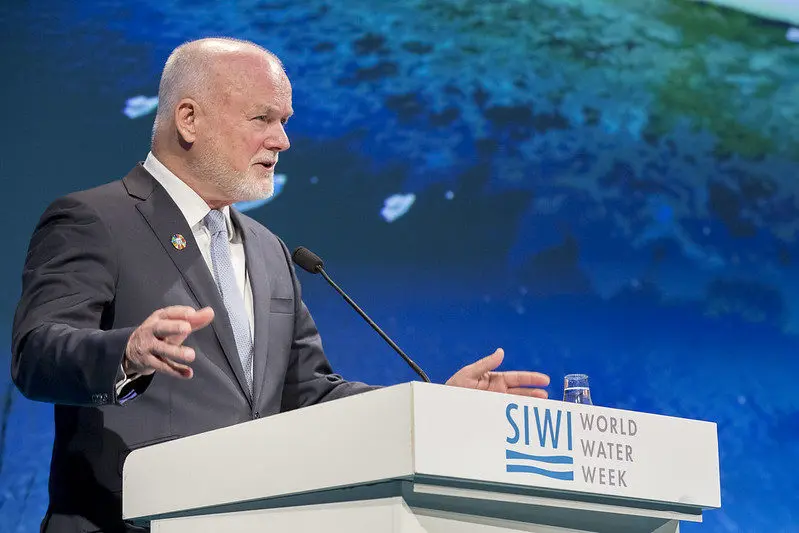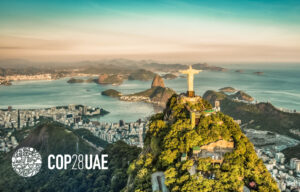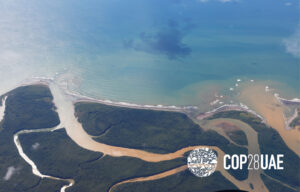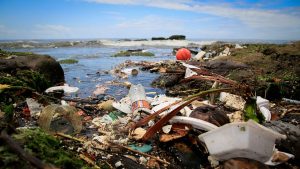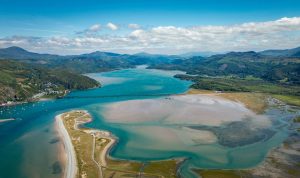We need to work together, from source to sea, to save the Ocean
The ocean provides at least 50% of the planet’s oxygen, it is one of the main sources of protein and is a pillar of the global economy. On World Oceans Day (8 June) we spoke to H.E. Peter Thomson, UN Secretary General’s Special Envoy for the Ocean about how we can overcome the challenges the ocean faces.
The Action Platform for Source-to-Sea Management (S2S Platform) is a multi-stakeholder initiative that is working toward a world in which land, freshwater, coastal and marine resources are managed holistically, balancing benefits for the environment, communities and economy from source to sea. It does this through supporting the adoption and implementation of a source-to-sea approach to management at regional, national, and sub-national levels.
The importance of the Ocean for humanity cannot be understated. What are some of the challenges it faces?
The Ocean’s ability to support life may be weakening. This uncertainty is arising from human activities on land, in freshwater bodies, along the coasts, and in the Ocean itself. Millions of tons of plastic waste continue to enter the Ocean every year, together with industrial waste, wastewaters, pharmaceuticals, fertilizers and pesticides.
Moreover, climate change is exerting huge pressures on marine ecosystems through Ocean acidification, deoxygenation and warming, with kick-on effects such as death of coral and rising sea levels.
Can we overcome these challenges?
The massive challenges involved in reversing the decline of the Ocean’s health, cannot be resolved by the Ocean community on its own. We will go a long way towards meeting these challenges and the needs of a growing population if we harmonize social, economic and environmental priorities within the source-to-sea continuum.
The source-to-sea approach is key. To protect the ecological integrity of coastal ecosystems and the Ocean, we need solutions for controlling the harmful effluence of agricultural, industrial, and human waste production.
Municipalities, river basin entities, farmers associations, for example, all need to be engaged in the work to identify and implement solutions to overcome the negative impacts of their activities downstream, on our coastlines and the Ocean.
The theme of World Oceans Day 2021 is life and livelihoods, how can source-to-sea action protect the life and livelihoods of the Ocean?
The Ocean’s health is in decline. Biodiversity is being exterminated at an alarming rate and the Earth’s ability to support human life will falter if we continue on the current unsustainable path. Of concern to many of us, is that human activities on land, in freshwater and along the coasts are compounding themselves, leaving no marine area unaffected.
Taking the big picture perspective of the source-to-sea approach, allows closer coordination in the implementation of the freshwater SDG6 and the Ocean’s SDG14, along with the land ecosystem’s SDG15 and SDG13 on climate change. United through the hydrological cycle, I view observance of the source-to sea ethos as a pre-condition for healthy land-freshwater-marine ecosystems, and hence for a sustainable future for humankind.
Investment in source-to-sea action needs to increase massively if we are going to assist in the reversal current trends of climate change and biodiversity collapse. The holistic approach of source-to-sea management, stimulating dialogue and cooperation between upstream and downstream stakeholders along the entire source-to-sea continuum is urgently needed to ensure that policies, infrastructure and practices bring the benefits we require.
It is critical that we break down the silos that we have all too comfortably been working within. We must now join hands and minds across our different disciplines, learning from and supporting each other to reach for the innovative solutions that will get us firmly on a path to a sustainable future. I call for everyone to strengthen partnerships across sectors that reflect the interconnectedness of human activities from source-to-sea.
The Action Platform for Source-to-Sea Management (S2S Platform) is continually growing, now with more than 30 partners. Why should more organizations working across the source-to-sea continuum join this important initiative?
I have been observing and working with the Source-to-Sea Platform for a number of years now and greatly admire their approach. The S2S Platform is a multi-stakeholder initiative that enables sustainable development across the land-freshwater-marine continuum through supporting the adoption and implementation of a source-to-sea approach to management. Through individual and joint activities, the S2S Platform has been instrumental in highlighting the importance of engaging upstream communities in identifying solutions that benefit downstream ecosystems and economies.
Together the members of the S2S Platform, which include many of the international and regional organizations dedicated to addressing marine pollution from land-based sources, represents an impressive knowledge and capacity base. It provides great opportunities for knowledge exchange, learning, innovation and for strengthened implementation of activities.
One role of partnerships, like the one provided through the S2S Platform, is to bridge the gap between the various SDG interest groups to collectively achieve the 2030 Agenda. By applying the source-to-sea ethos to the challenges we face today, we will build towards healthy land-freshwater-marine ecosystems coherence, and through that a more climate resilient and sustainable future.
If we continue to work together, across sectors, from source to sea we can start to overcome the challenges the ocean faces and ensure we protect the lives and livelihoods dependent on a healthy ocean.
